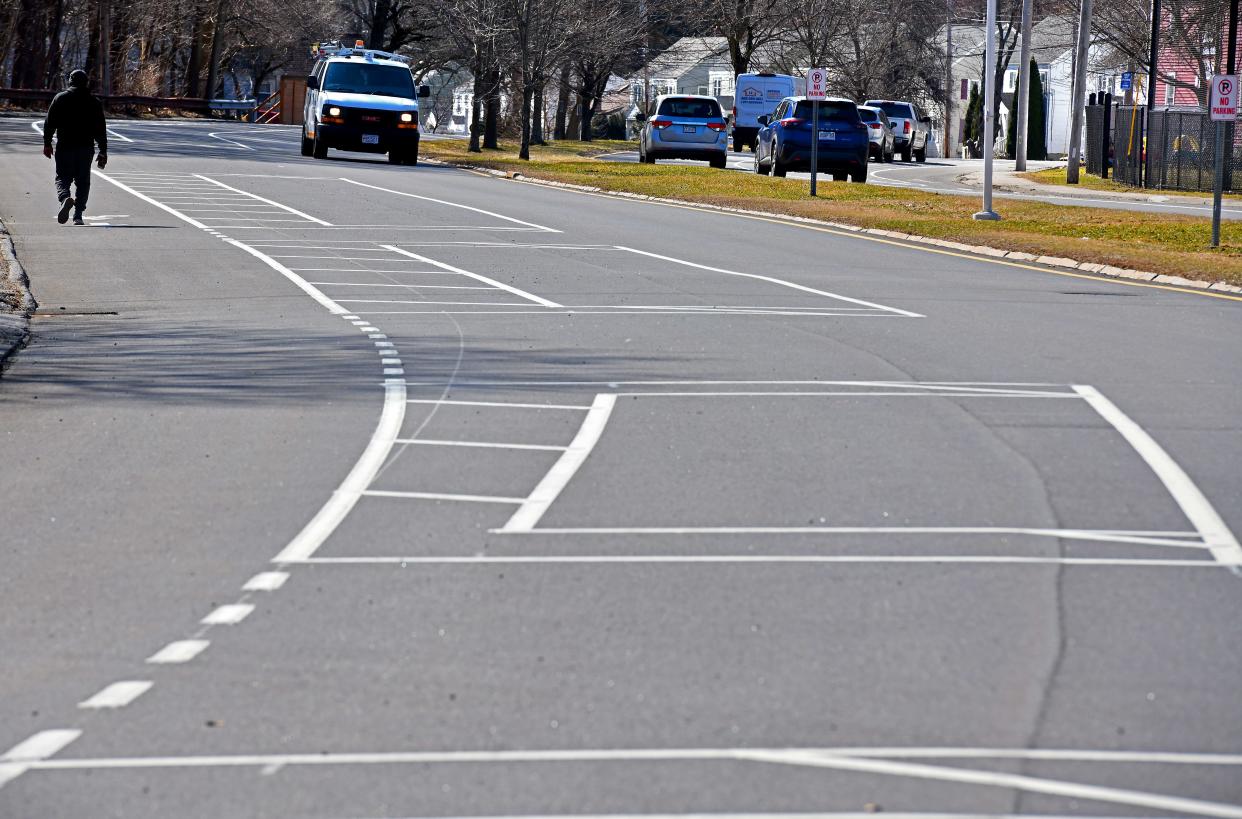Worcester police chief: Changes on Mill Street have not resulted in more crashes

WORCESTER — Weeks after city councilors pondered whether the reconfiguration of Mill Street was dangerous, City Manager Eric D. Batista and Interim Police Chief Paul B. Saucier have submitted a report finding that there have been less crashes the past four months compared to the same period last year.
The crash numbers are in line with the five-year average for crashes on Mill Street, Batista writes.
"Though operational for only four months at this point, the configuration changes do not appear to have notably changed crash rates to date," Batista wrote in a communication.
The City Council is scheduled to discuss the communication Tuesday.
Late last year, Mill Street was redesigned to create parking-protected bike lanes on both sides of the street.
The design reconfigured one of the two driving lanes on each side of the 1.8-mile, four-lane portion of the street into a bike lane in the hopes of making the street safe for bicyclists and reducing speeds on a street infamous for fast drivers.
According to Saucier's report, the study focused on the area from 195 Mill St. to the intersection of Mill and Chandler Streets, where the reconfigurations were made.
The reconfiguration, which is a pilot that the city intends to expand upon with $2 million from earmarked funding in the fiscal 2024 federal budget, was completed around Dec. 1.
According to Saucier, police responded to calls for 13 crashes between December and March: five in December, three in January, and two so far in March.
In the same time period a year ago, 16 crashes had occurred.
"While the sample size is extremely small because the project is so new, the changes do not appear to have notably changed crash rates in either direction in the first four months since they have been implemented," Saucier wrote.
With the crash rate being consistent with the five-year average, Saucier wrote, the city expects crash numbers to decline further as the community gets used to the road.
Over the past five years, excluding the period from December 2020 to March 2021 because the COVID-19 pandemic led to much lower crash rates in the city overall, crashes in that area ranged from 10 to 16 in the same time period, for an average of 13.
The Mill Street reconfiguration has been hotly contested and had been a topic during last year's District 5 City Council race, with Councilor Etel Haxhiaj supporting the city's redesign and adoption of "Complete Streets" and "Vision Zero" programs.
Vision Zero will focus on road design and management to reduce car accidents. Complete Streets is a street design policy championed by transportation advocates nationwide that attempts to enhance safe travel for residents whether they are in a vehicle, walking or on a bicycle.
In late February, 90-year-old Worcester resident Daniel Abraham reportedly died following a serious crash on Mill Street, in which a moving vehicle collided with parked cars.
Prior to the reconfiguration, Mill Street was the site of several crashes.
City councilors were spurred to take action following Abraham's death, voting 9-2 for an order from Councilor-at-Large Morris Bergman to request Batista pause elimination of travel lanes on public streets with the creation of on-street parking spaces.
City officials said none of the other planned street reconfigurations feature similar layouts.
On March 12, Bergman said he could not be sure whether the reconfiguration was a good or bad idea, but advocated for taking a careful approach and a principle of "do no harm" with street work.
Councilor-at-Large Khrystian King said he would be in support of moving parking back to the curb while the city implements some improvements to the street design.
Haxhiaj said she was concerned about misinformation and speculation about the number and causes of recent crashes.
Department of Transportation and Mobility Commissioner Steve Rolle said that the city plans to make improvements to address concerns including making bicycle crossings green, using flex posts to draw attention to parking spaces and installing a right-turn pocket approaching June Street.
In the report, Batista wrote that it is understandable that Mill Street has drawn attention because there are no similar designs in Central Massachusetts. However, he added that similar designs have been established and tested elsewhere. Similar designs are present in Boston, Cambridge, Somerville and Brookline.
"We should expect that there will be a period of adaptation and that it will take time for users to become comfortable with the new configuration," Batista wrote. "Experience nationally shows that 'right sizing' travel lanes, road diets, and parking protected bike lanes improves safety for all roadway users, including motorists."
This article originally appeared on Telegram & Gazette: Data: Changes on Mill Street have not resulted in more crashes

